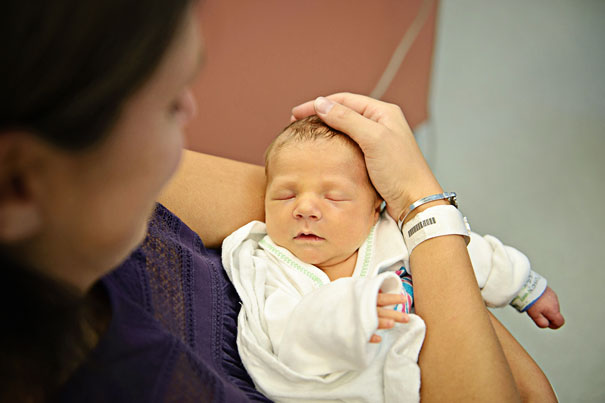
Benefits of Kangaroo Care for Preemies
After a premature birth, it’s natural for parents to feel overwhelmed. Fortunately, there are some things both parents can do to feel a little more in control and help their baby get stronger—including practicing kangaroo care. We’ll walk you through what kangaroo care is, the benefits of kangaroo care for premature babies, and how a little (or a lot of) skin-to-skin contact each day can help your preemie grow and develop, and maybe even go home sooner.
What Is Kangaroo Care for Premature Babies?
You’ll likely have lots of questions following the premature birth of your baby, and you might be wondering whether you can enjoy skin-to-skin contact with your little one. In fact, not only is it helpful for full-term babies, but the importance of kangaroo care is especially great for preemies.
Kangaroo care, also known as skin-to-skin contact, is simply holding your baby, who is wearing only a diaper, against your bare chest. You can cover their back with a blanket or with one of your own pieces of clothing, giving them the feeling that they're safely in either parent's “pouch".” It’s as if the baby’s in a kangaroo pouch—hence the term.
The importance of skin-to-skin contact has been more widely known since the 1970s, when it was found that preemies had a much better chance of survival if they spent a large portion of the day between their mom’s breasts. Today, we know that babies can benefit from skin-to-skin contact with dads as well. This kangaroo method for premature babies has become a vital practice in neonatal care.
Kangaroo Care Benefits for Premature Babies
There are many benefits of skin-to-skin contact for preemies and their parents. Here are some of the better-known advantages for premature babies that this practice offers:
Overall, this kind of care, often referred to as the kangaroo method for premature babies, can help reduce some of the common problems preemies face. It also highlights the advantages of premature babies experiencing close contact, potentially improving the chances of an earlier discharge from the hospital.
For parents, it can help alleviate some of their worry by making them feel more closely bonded with their baby. It also gives parents confidence that they are doing everything they can to help their little one get stronger. Research indicates that this bonding time may also help reduce the risk of postpartum depression.
How to Safely Practice Kangaroo Care
Ask the NICU staff about when to begin kangaroo care. Your medical team will be able to tell you about your hospital’s post-birth policy. Some will want you to wait until your baby’s health is stable, while others will encourage skin-to-skin contact right after birth. If possible, discuss your preferences with your doctors before labor, so you won’t feel disappointed if your baby isn’t placed on your chest right away. Hospital policies might differ depending on whether you have a cesarean delivery or a vaginal delivery.
Here are the steps to follow for kangaroo care with your baby:
You can even enjoy skin-on-skin contact while bottle feeding or breastfeeding your preemie. Many dads especially enjoy the benefits of skin-to-skin contact while bottle feeding, for example.
NICU staff will be able to provide parents one-on-one guidance to make sure this shared time is comfortable and enjoyable.
What to Watch Out for With Skin-to-Skin Contact for Preemies
You might feel nervous about holding your baby for the first time, particularly if they're connected to tubes and look small and fragile. And when you begin kangaroo care with your baby, you might be fearful that you'll hurt them by holding them close. Don't worry—you won’t. Hospital staff will be able to help position your baby on your chest so that any tubes or wires are moved to a comfortable spot. It can help to place the baby on a blanket, lean gently over your baby, wriggle your hand under the blanket, and support their back and head as you lift them up onto your chest.
To help make kangaroo care even easier for premature babies, there are special clothes for preemies that are simple to open at the front so that your baby can be placed on your bare chest. Make sure you keep your baby in an upright position, with their airway clear.
With a little practice, you’ll be confident in using the kangaroo method for premature babies, sure in the knowledge that you’re helping your preemie get stronger every day.
Read more about Baby
Related Articles
Join a World of Support
through Pregnancy and Parenthood.
TRACK WITH TOOLS
LEARN WITH EXPERTS
GET REWARDED







